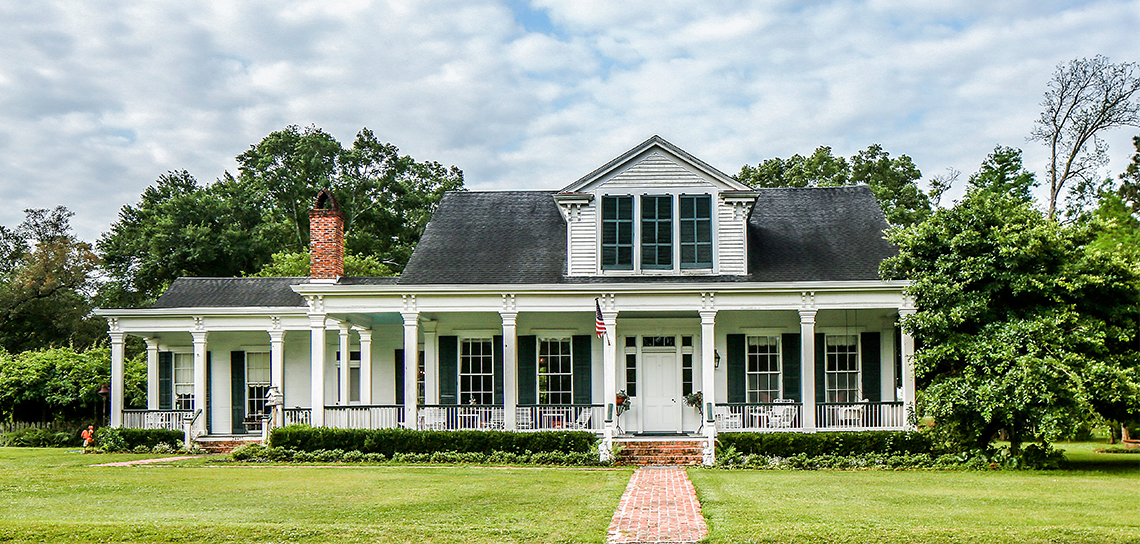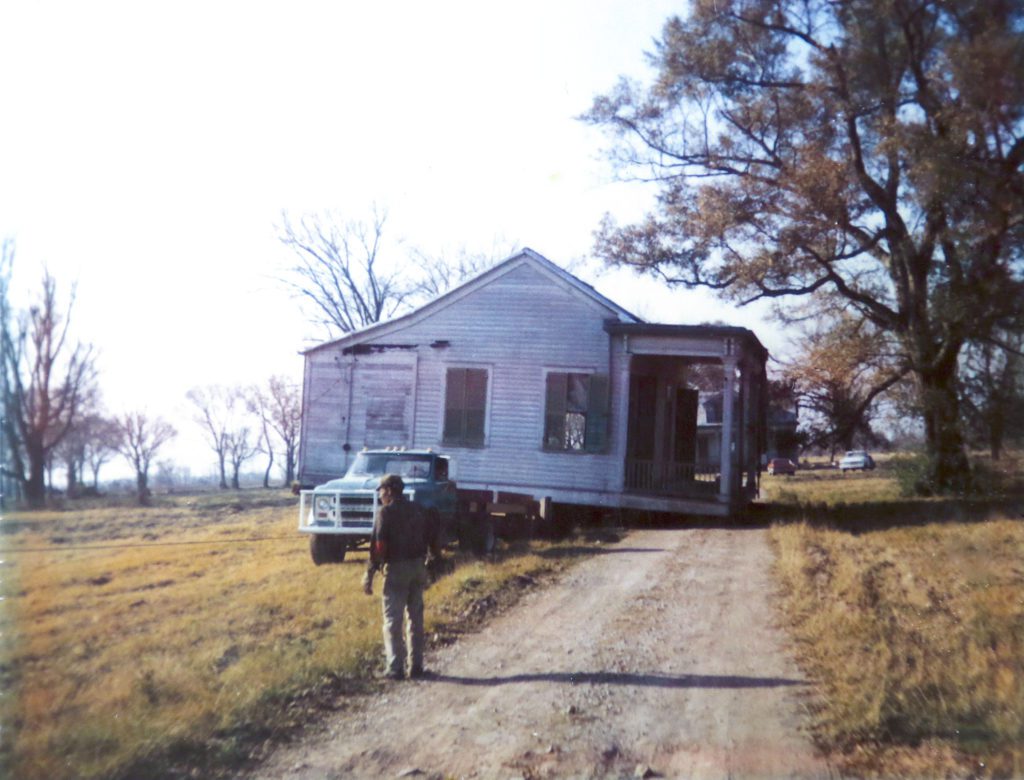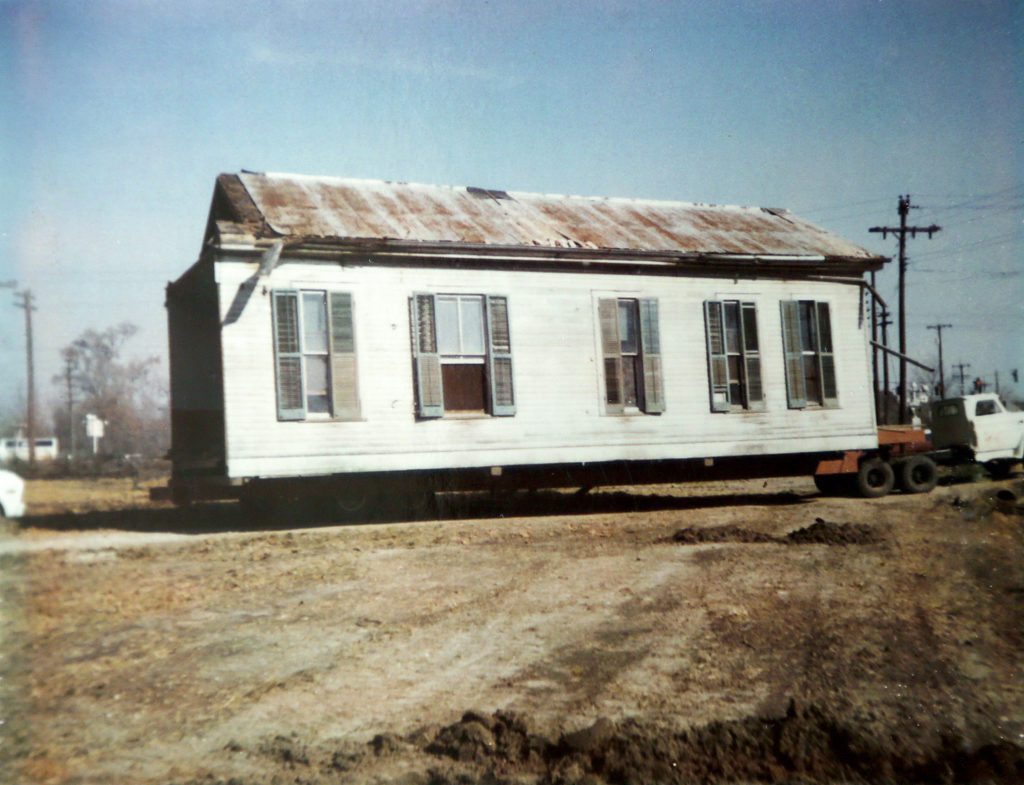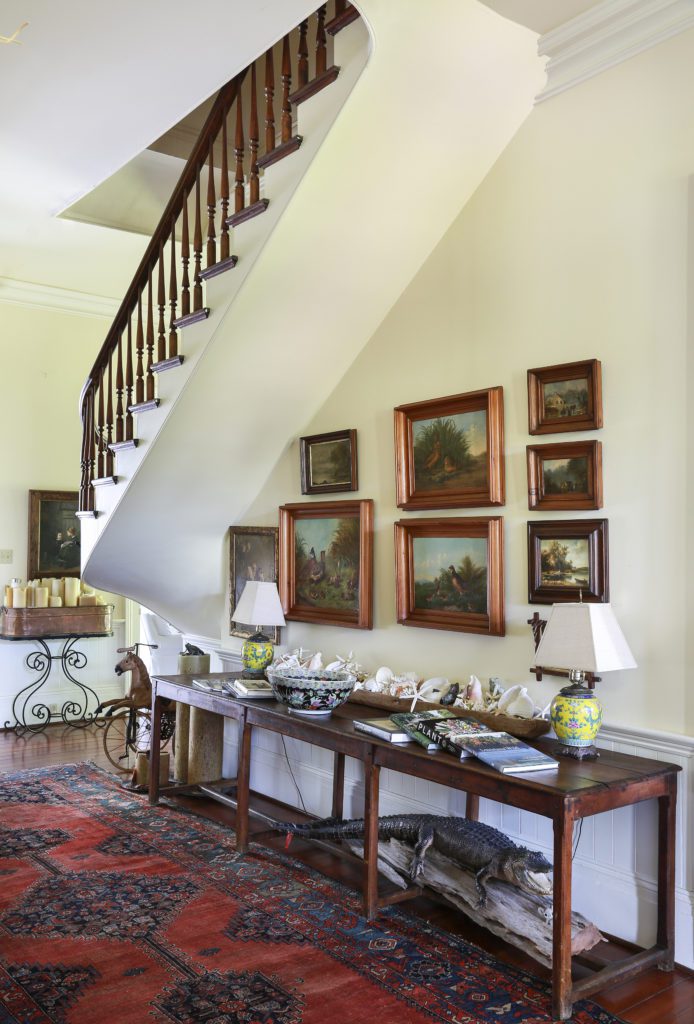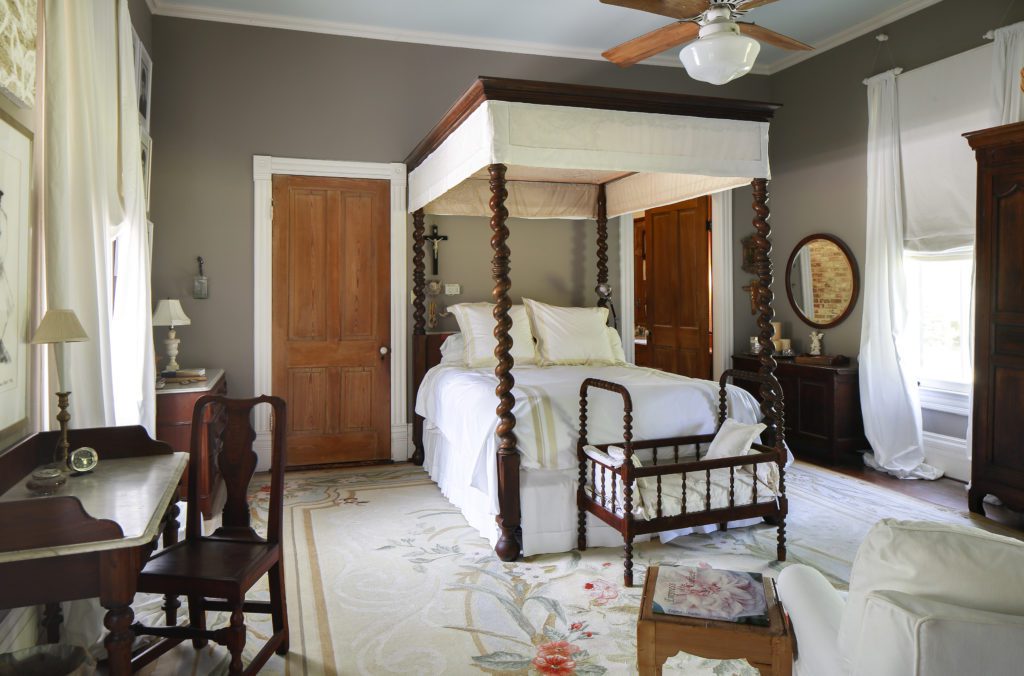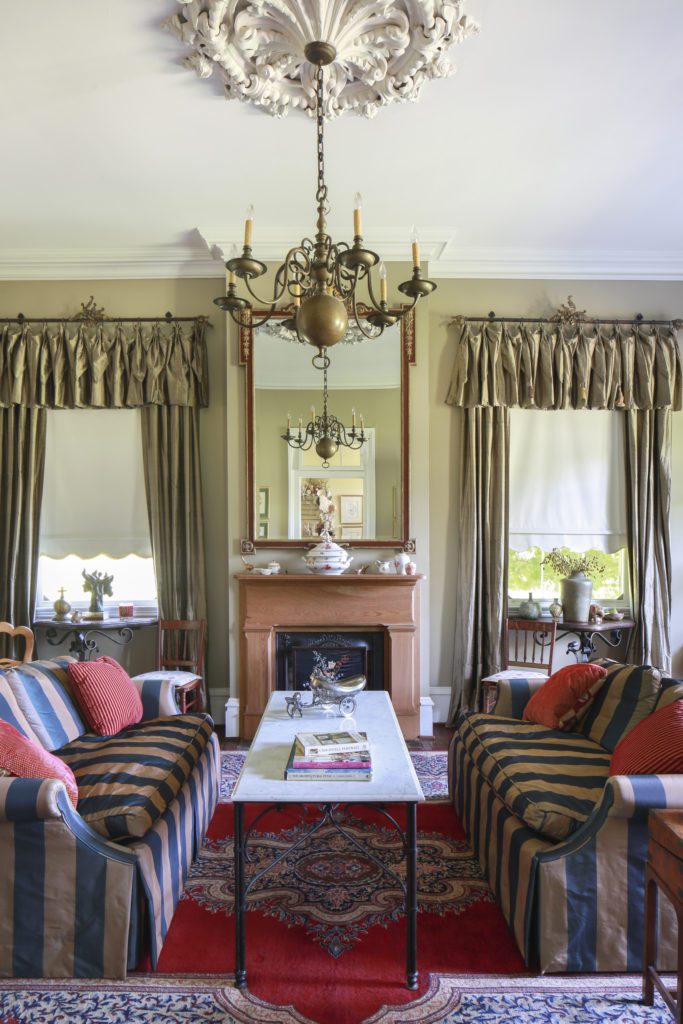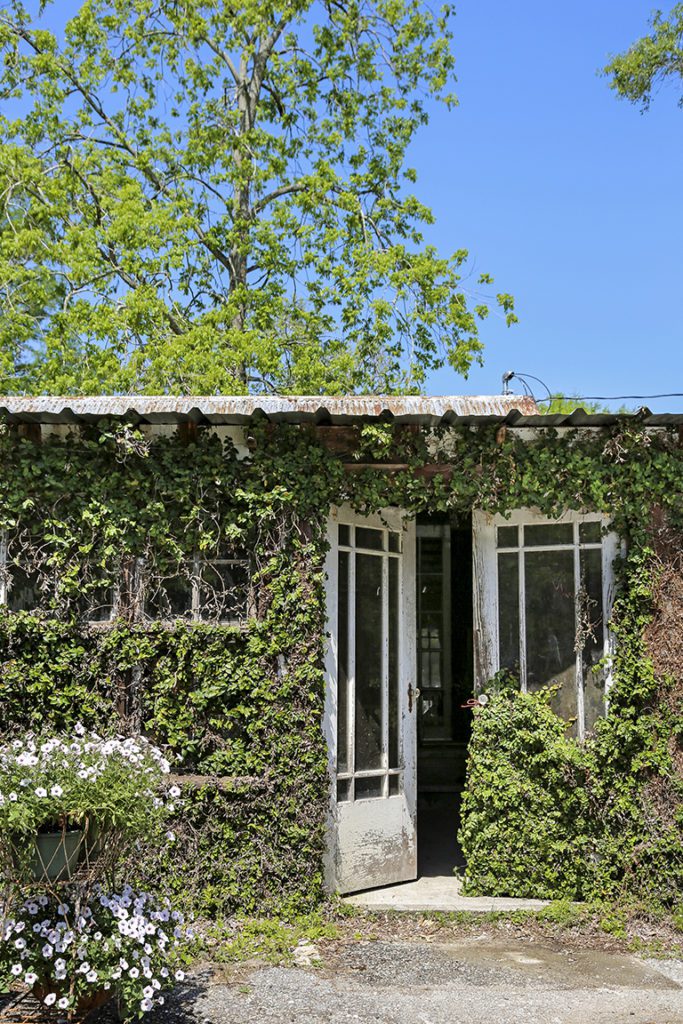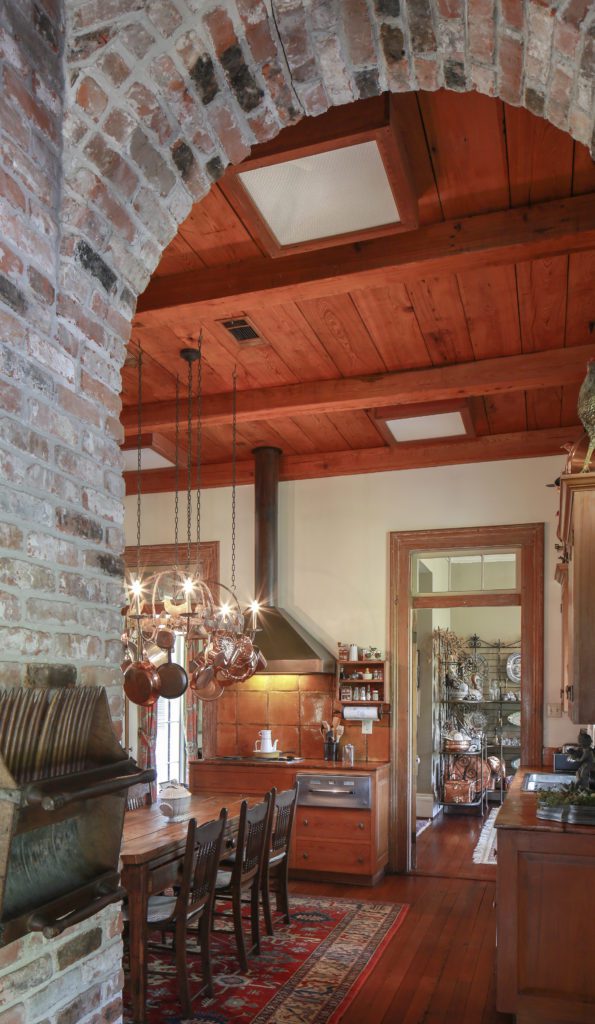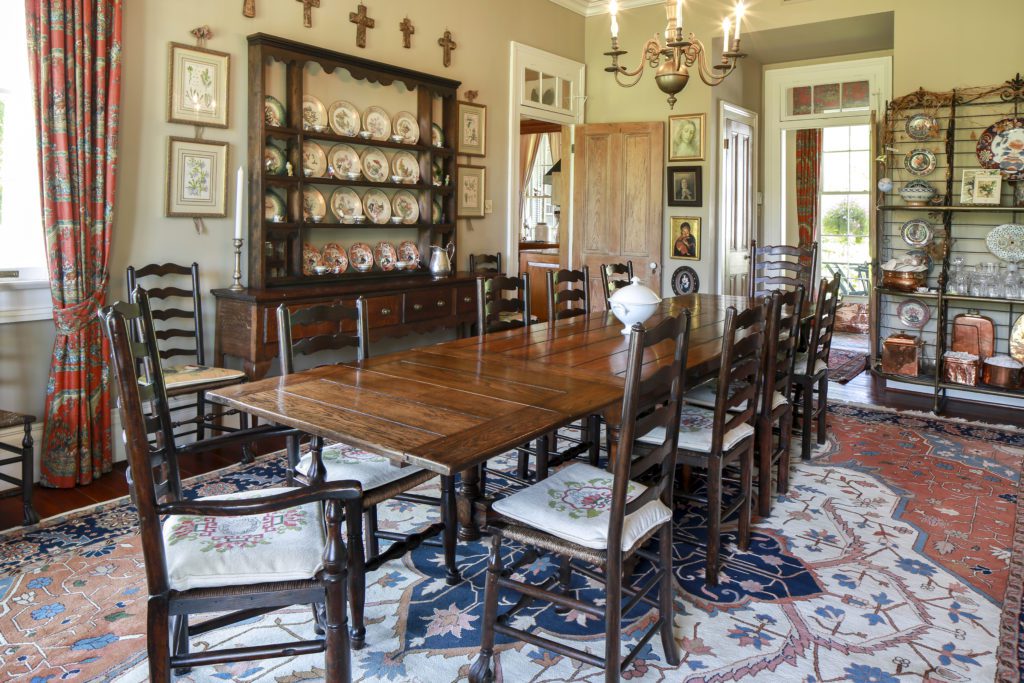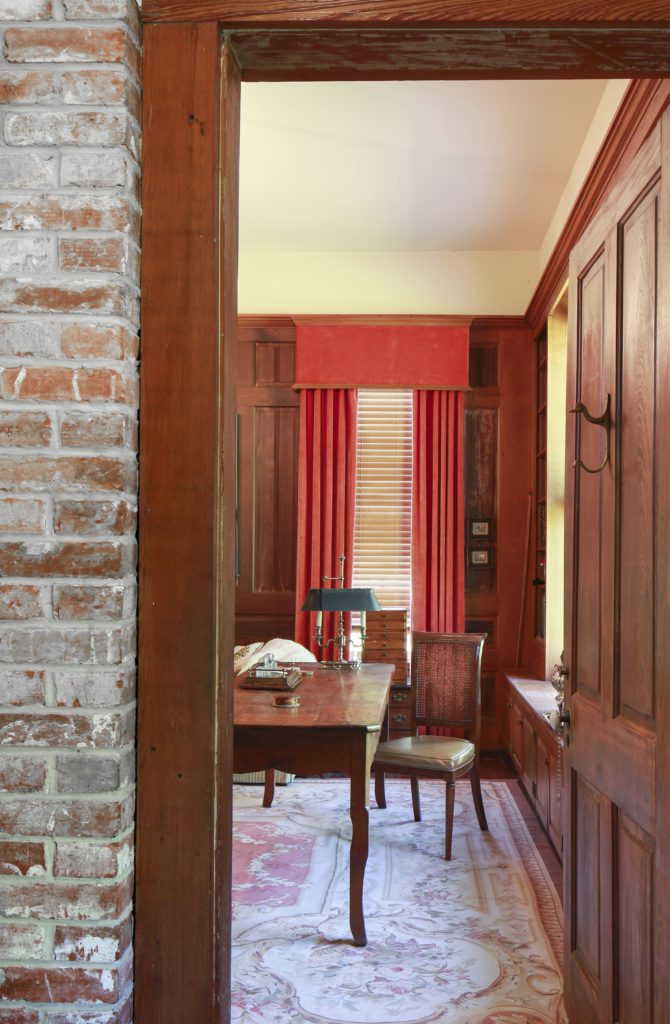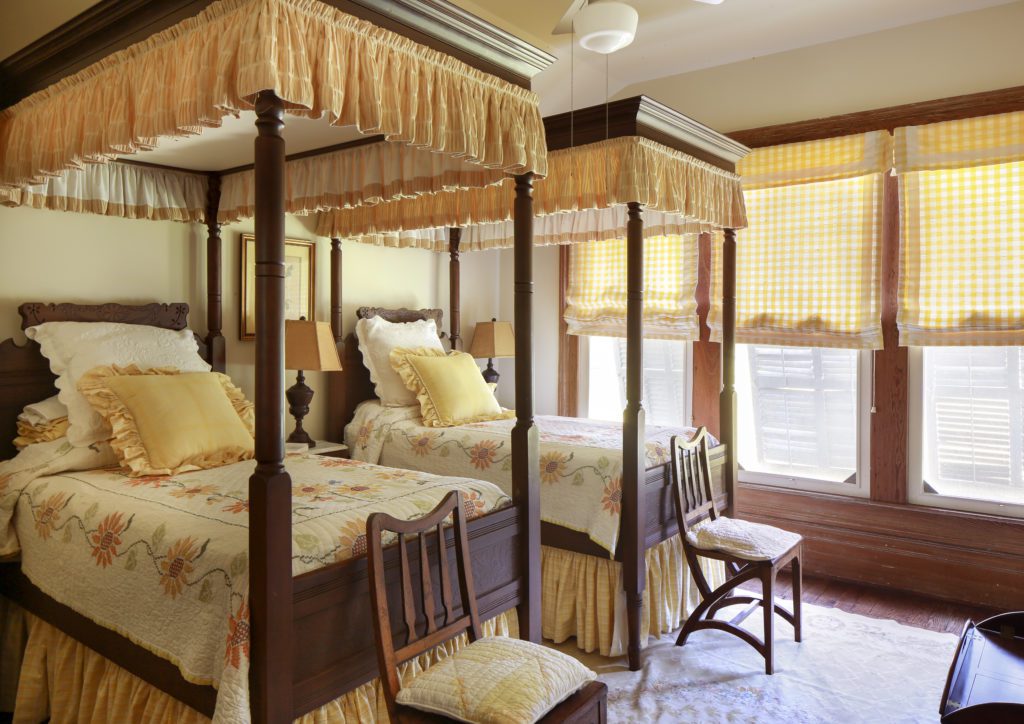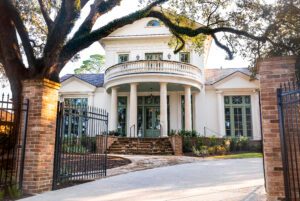Saving grace: A century-year-old home filled with family memories
‘They underestimated the weight of the house,” says Dr. Jimmy Grace, shuffling through blackand-white snapshots of a disassembled home being hauled by trucks. “And I got the cheapest movers I could get,” he looks up, chuckling. “Sometimes cheaper isn’t better.”
The year was 1970. Or was it 1971? Depending on the photos, the dates of the house relocation change because it took almost seven months to maneuver the structure three and a half miles in Plaquemine across the highway, over the streets, through the cane fields and down a gravel lane to its final destination. Along the way, the James Grace House lost cut-glass doors, the balustrades and a few shutters to vandalism; it lost the plaster moldings to the bumpy transfer; and it lost time and money thanks to a rainy spell that kept some roads impassable as well as a sugar cane grinding season that kept necessary fields off limits to traverse.
“It was a stressful time to say the least,” says Jimmy.
And the house relocation wasn’t the only stressful thing this busy general practitioner had on his plate in 1971. His wife Dianne was pregnant with their seventh child while their oldest was only 10. The Grace family was busting at the seams.
“We didn’t think to ourselves, ‘We need a big house because we have a big family,’” says Jimmy. “This house really found us. And we fell in love with the possibilities.”
Jimmy and Dianne had long admired the work of noted Louisiana architect A. Hays Town, marveling at Town’s Lafayette buildings while living there during Jimmy’s days working at Lafayette Charity Hospital. Upon moving back to Jimmy’s hometown of Plaquemine, the duo visited with Town in Baton Rouge, got a tour of some of his homes, and requested that he design a home for them on Jimmy’s family property.
“When I told him what my budget was, he told me, ‘Well, you can always add on later,’” recalls Jimmy. “We didn’t have much money, but we knew what we wanted. Mr. Town could not have been more gracious and accommodating.”
But while the Graces waited on drawings from Town, Dianne attended an antique furniture sale at an 1875-era home in Plaquemine. The old wood floors, the high ceilings, the transoms and other details of the house captivated her. But it was the grand entryway with the winding staircase that stole her heart.
“My wife fell in love with the house on the spot,” says Jimmy. “It wasn’t for sale, but I knew the owner. Things fell into place and we could buy the home with the goal to relocate it. We didn’t have to build from scratch.”
But the relocation road wasn’t easy—the house move even knocked out all electricity in north Plaquemine when bulldozers had to pull the trucks carrying the house across the highway, downing some wires along the way. And the route to renovation didn’t look any easier.
“When we finally got it here and put it all together, it looked awful,” says Dianne. “It looked like a bunch of firewood. Just torn-up pieces of wood.”
But Town loved it. The architect took over and redesigned the house to accommodate the family of nine while staying true to the history of the home. Keeping the same roofline and square footage, he repositioned the master bedroom, kitchen, keeping room, dining room and study on the ground floor. On the second floor, he raised the ceiling on a small space to carve out a bedroom in addition to the other three large bedrooms that the Grace children would occupy. Unlike today’s typical teenage accommodations, the seven Grace kids all shared one upstairs bathroom.
“We were all pretty much in motion all the time,” says Dianne, of her children’s years at home. “We didn’t have a TV upstairs, so it wasn’t like everyone was stuck in their rooms or stuck in the house. We had plenty of space.”

The Grace clan all attended high school in Baton Rouge at Catholic High and St. Joseph’s Academy. Their brood includes Ellen Tominey, Jamie Meeks, Tiger Grace, Mary Murphy, Ashley Casey and Joe Grace. Their son Robert died of leukemia in 2002 following an unsuccessful bone marrow transplant donated by his sister Ellen.
“The true story of the Grace family is that my poor son Robert was so sick following his transplant in New York City but never alone,” says Jimmy. “For two years while he was ill, he was tended to continually by either his mother or one of his siblings. He never spent a night by himself.”
This love and dedication to family and memories is evident along the walls of this historic home. Photos, memorabilia, paintings and collages are memories of moments too precious to discard. The walls of the pantry are even decoupaged in the kindergarten drawings by the seven Grace children. Today, Jimmy and Dianne Grace have 13 grandchildren and one great-grandchild with another on the way. They remember fondly the days when their children swam in the bayou and rode horses, and when their four daughters were married under the oaks. They remember all the special family meals held in the dining room at a table made to accommodate a growing group. This house is more than a historic landmark with great bones and sense of style, it is home full of personal memories and a sense of place. It is a reflection of a family and of loss and love and life.

“My next move will be to the cemetery,” says Jimmy, who can’t bear to leave the memories behind.
In fact, the Graces put the house on the market a number of years ago because the upkeep of the old home and the acreage became difficult to afford. After five families showed interest in purchasing the place, Jimmy took it off the market and came up with another solution. Along with his sons Tiger and Joe, he turned the 3,000-square-foot barn into a destination event location and added rustic-plank bathrooms, a bridal suite and more for picturesque parties. The house itself is off limits to visitors, but in the last three years, many weddings have taken place underneath the oaks and many receptions have lighted up the night in the barn. It’s the latest reinvention of the homestead to ensure it stays in the family for years to come.
“There are many other beautiful places in the world, I know,” says Jimmy, as he looks off his front porch at the surrounding scene. “But I don’t know how to explain it, I just love it here.”
See more images from the James Grace House in our gallery below:




